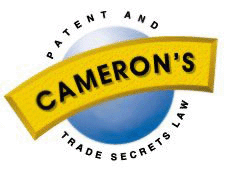
Case Comment
Hy Kramer Canada Ltd. et al. v.
Lindsay Specialty Products Ltd.
citation(s): (1986) 9 C.P.R. (3d) 297 (F.C.T.D. per Rouleau J.)
|
Hy Kramer Canada Ltd. et al. v.
|
copyright 1997 Donald M. Cameron
Every patent grant is protected by the statutory presumption of its prima facie validity (s. 47 of the Act). The onus is on the party attacking the patent to prove its invalidity. (See Omark Industries (1960) Ltd. v. Gouger Saw Chain Co. et al. (1964), 45 C.P.R. 169 at pp. 204-5, [1965] 1 Ex. C.R. 457 at pp. 492-3, 27 Fox Pat. C. 1; Alcohol Countermeasure Systems Inc. v. Lion Laboratories Ltd. et al (1983), 77 C.P.R. (2d) 83, 1 C.I.P.R. 199).
In Reeves Bros Inc. v. Toronto Quilting & Embroidery Inc. (1978), 43 C.P.R. (2d) 145 at p. 157 (and followed by the Federal Court of Appeal in Johnson Controls, Inc. v. Varta Batteries Ltd. (1984), 80 C.P.R. (2d) 1 at p. 11, 3 C.I.P.R. 1, 53 N.R. 6; Corning Glass Works v. Canada Wire & Cable Ltd. (1984), 81 C.P.R. (2d) 39 at p. 63, 2 C.I.P.R. 77) Gibson J. examined the conditions which must exist before a finding of anticipation can be made. At p. 157 he states:
... in order that there may be a finding of anticipation, the prior art must (1) give an exact prior description; (2) give directions which will inevitably result in something within the claims; (3) give clear and unmistakable directions; (4) give information which for the purpose of practical utility is equal to that given by the subject patent; (5) convey information so that a person grappling with the same problem must be able to say "that gives me what I wish"; (6) give information to a person of ordinary knowledge so that he must at once perceive the invention; (7) in the absence of explicit directions, teach an "inevitable result" which "can only be proved by experiments" and (8) satisfy all these tests in a single document without making a mosaic.
Return to:
Cameron's IT Law: Home Page; Index
Cameron's Canadian Patent & Trade Secrets Law: Home Page; Index